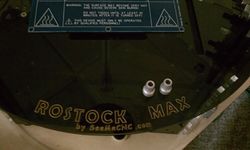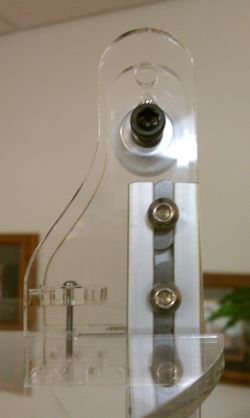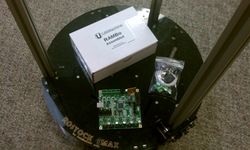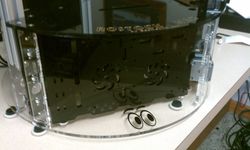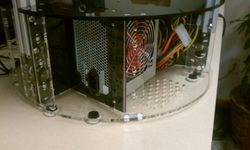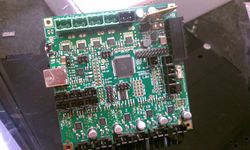Rostock MAX
Release status: experimental
| Description | Rostock MAX is a delta robot 3D printer based upon Johann's origional.
|
| License | |
| Author | |
| Contributors | |
| Based-on | |
| Categories | |
| CAD Models | Coming Soon
|
| External Link |
Contents
Introduction
Rostock MAX is based upon Johann's origional Rostock Delta Printer Prototype. It features T-Slot extrusion for the linear motion ( cheapskate ) and laser cut acrylic OR plywood framework. The lower wrap piece around the bottom hides the electronics, but it's removeable to show off all the acrylic/plywood and electronics if you want.
Photos
Bill of Materials
Hardware
Laser Cut/Printable Parts
Electronics
Firmware
The Rostock MAX uses the same firmware as the origional Rostock. It can be found Here
Assembly
Motors
The Rostock MAX uses 4 NEMA 17 stepper motors. There is one motor for each of the three delta arms, and one for the extruder. You can substitute NEMA 11 thru 17 motors on the extruder, but the arms need more torque to lift the carriage.
Motors used in SeeMeCNC kits are
42BYGHW811
Other motors that should work well are
42BYGHW804
If you use other motors, be sure to list them and their performance here please.
NEMA 17's uses M3 X.5-10mm mounting screws.
Endstops
Currently, there are 6 endstops used for homing the delta arms. One on top and bottom of each arm. Changes are in the works by Johann to eliminate the bottom endstops, as the tops have micro adjustments already, so no need for the lower adjustable endstops.
Belts and Pulleys
Uses GT2 6mm wide belt (Length will be posted upon final design, but currently using 72" (1830mm) lengths of belt). You will need three of these belts, one for each arm. Origional Rostock uses 40 tooth pulleys, we are using 15 tooth machined aluminum pulleys on the prototype to increase torque and positioning accuracy.
